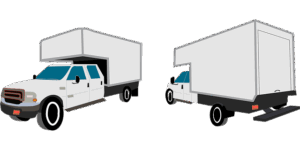Diagnostic Tools
Diagnostic Tools: Unlocking Insights and Shaping Progress
Introduction
In an era defined by rapid technological advancements and complex global challenges, diagnostic tools have emerged as indispensable assets across various sectors. These tools, with their ability to gather, analyze, and interpret data, play a pivotal role in decision-making, problem-solving, and innovation. This comprehensive article aims to explore the multifaceted world of diagnostic tools, delving into their definition, historical evolution, global impact, economic implications, technological innovations, regulatory landscape, challenges, successful applications, and future prospects. By the end, readers will gain a profound understanding of the significance of these tools in shaping our modern world.
Understanding Diagnostic Tools
Definition and Core Components
Diagnostic tools are technologies or methodologies employed to identify, assess, and interpret complex phenomena, whether it’s diseases, technical issues, market trends, or societal challenges. They facilitate the extraction of meaningful insights from vast datasets, enabling professionals across diverse fields to make informed decisions. The core components of a diagnostic tool typically include:
- Data Collection: Gathering relevant data through various sources such as sensors, surveys, experiments, or existing databases.
- Data Processing: Organizing and cleaning the collected data to ensure accuracy and consistency.
- Analytical Techniques: Applying statistical methods, machine learning algorithms, or domain-specific models to uncover patterns, correlations, or anomalies.
- Interpretation and Visualization: Translating analytical results into actionable insights through reports, dashboards, or interactive visualizations.
- Feedback Loop: Utilizing feedback from users or experts to enhance the tool’s performance and accuracy over time.
Historical Context and Evolution
The concept of diagnostic tools has evolved significantly over centuries. Historically, early forms of diagnostics relied on observation and intuition. Ancient civilizations like Egypt and Greece made significant contributions by developing basic medical diagnostic practices. The Industrial Revolution introduced mechanical instruments for measurement and analysis, laying the groundwork for more sophisticated tools.
The digital age revolutionized diagnostics with the advent of computers and advanced algorithms. Early computer-aided diagnosis (CAD) systems emerged in fields like radiology, helping radiologists interpret medical images more accurately. Over time, advancements in artificial intelligence (AI), machine learning, and big data analytics have propelled diagnostic tools to new heights, enabling them to handle increasingly complex tasks.
Global Impact and Trends
International Influence
Diagnostic tools have a profound global impact, permeating various sectors including healthcare, manufacturing, agriculture, finance, and environmental monitoring. Their influence is evident in:
- Healthcare Systems: Enhancing disease diagnosis, patient monitoring, and personalized treatment planning.
- Industrial Production: Optimizing manufacturing processes, predictive maintenance, and quality control.
- Agriculture: Precision farming, crop health monitoring, and yield prediction.
- Financial Services: Fraud detection, risk assessment, and algorithmic trading.
- Environmental Studies: Climate change analysis, pollution tracking, and ecosystem monitoring.
Key Trends Shaping the Diagnostic Tools Landscape
Several trends are currently shaping the development and adoption of diagnostic tools globally:
- Digital Transformation: The accelerated digital transformation across industries has led to a surge in data generation, fueling the demand for advanced diagnostic solutions.
- Artificial Intelligence (AI) Integration: AI-driven diagnostics are gaining traction, particularly in healthcare and finance, with machine learning algorithms improving accuracy and efficiency.
- Internet of Things (IoT) Expansion: The proliferation of IoT devices generates vast amounts of real-time data, enabling more dynamic diagnostic applications.
- Cloud Computing Adoption: Cloud-based diagnostic tools offer scalability, flexibility, and cost-effectiveness, making them attractive for businesses of all sizes.
- Open-Source Collaboration: Collaborative efforts among researchers and developers worldwide are fostering innovation and accelerating the creation of open-source diagnostic tools.
Regional Disparities and Opportunities
While global trends provide a framework, regional variations in healthcare infrastructure, technological adoption, and economic development present distinct challenges and opportunities:
| Region | Strengths | Challenges |
|---|---|---|
| North America | Advanced healthcare systems, robust tech infrastructure | High cost of technology implementation, data privacy concerns |
| Europe | Strong focus on patient data protection, diverse tech ecosystem | Increasing regulatory burden, regional disparities in digital literacy |
| Asia Pacific | Rapidly growing tech sector, early adoption of innovations | Infrastructure gaps, data security and privacy issues |
| Latin America & Middle East | Emerging markets with vast untapped potential | Limited access to advanced technologies, healthcare infrastructure challenges |
Economic Considerations
Market Dynamics and Growth
The global diagnostic tools market has experienced steady growth due to the increasing demand for efficient and accurate decision-making processes. According to a 2021 report by Grand View Research, the market size was valued at USD 53.6 billion in 2020 and is expected to grow at a compound annual growth rate (CAGR) of 12.7% from 2021 to 2028. This growth is driven by factors such as:
- Rising healthcare expenditure and the aging population.
- Increasing adoption of digital technologies in various industries.
- Growing need for predictive analytics and real-time monitoring.
Investment Patterns and Trends
Investment in diagnostic tools has been primarily focused on research and development (R&D), with a significant portion directed towards AI and machine learning applications:
- Venture Capital (VC) Funding: VC firms have invested substantial amounts in startups developing innovative diagnostic solutions, particularly in healthcare and fintech.
- Corporate Inversions: Established companies are acquiring smaller diagnostic tool providers to gain access to their technologies and talent pools.
- Government Grants: Public funding supports R&D initiatives, especially in areas like precision medicine and environmental monitoring.
Economic Impact and Contribution
Diagnostic tools play a crucial role in driving economic growth and development:
- Healthcare Cost Reduction: Accurate diagnostics lead to more effective treatments, potentially reducing healthcare costs over time.
- Productivity Enhancement: In manufacturing and other sectors, advanced diagnostics optimize processes, increase productivity, and reduce waste.
- Job Creation: The growing market fosters job opportunities in research, development, sales, and support roles.
- Competitive Advantage: Early adopters gain a competitive edge by leveraging diagnostic tools to stay ahead of trends and challenges.
Technological Advancements
Breakthroughs Shaping the Diagnostic Landscape
Recent technological advancements have significantly enhanced the capabilities and applications of diagnostic tools:
- Artificial Intelligence (AI) and Machine Learning (ML): AI-driven diagnostics leverage machine learning algorithms to analyze complex data, enabling accurate predictions and insights. These models can adapt and improve over time, enhancing their performance.
- Big Data Analytics: The ability to process and analyze vast datasets has revolutionized diagnostics by uncovering hidden patterns and correlations. Advanced analytics tools enable more comprehensive decision-making.
- Cloud Computing: Cloud-based diagnostic platforms offer scalability, flexibility, and cost savings. They allow for real-time data processing and collaborative work among remote teams.
- Internet of Medical Things (IoMT): The integration of IoT devices in healthcare has enabled continuous patient monitoring, improving diagnostics and treatment outcomes. Wearable sensors and connected medical devices are becoming commonplace.
- Quantum Computing: While still emerging, quantum computing holds promise for solving complex optimization problems, which could revolutionize certain diagnostic processes.
Future Potential and Innovations
The future of diagnostic tools is filled with promising possibilities:
- Personalized Medicine: Advanced diagnostics will enable personalized treatment plans based on individual genetic profiles, lifestyle factors, and real-time health data.
- Real-Time Monitoring: IoT and wearable technologies will allow for continuous monitoring of vital signs and environmental factors, leading to proactive healthcare solutions.
- Predictive Analytics: Diagnostic tools will become increasingly adept at predicting outcomes, enabling businesses and governments to make proactive decisions.
- Enhanced Visualizations: Advanced data visualization techniques will help users interpret complex information more effectively, fostering better decision-making.
- Collaborative Diagnostics: Cloud-based platforms will facilitate collaboration among global experts, accelerating the development and adoption of diagnostic solutions.
Policy and Regulation
Global Regulatory Frameworks
The regulatory landscape surrounding diagnostic tools varies across jurisdictions but generally aims to ensure safety, efficacy, and data privacy:
- Food and Drug Administration (FDA) – USA: The FDA regulates medical diagnostic devices, setting standards for safety, effectiveness, and quality. It classifies devices based on risk levels and requires appropriate clinical evaluations.
- European Union (EU) Medical Devices Regulation: EU regulations focus on a risk-based approach, ensuring the safety and performance of medical devices across all stages of their life cycle.
- International Organization for Standardization (ISO): ISO develops international standards for various diagnostic tools, promoting consistency and quality worldwide.
- Health Data Privacy Laws: Countries like the USA (HIPAA), EU (GDPR), and others have stringent data privacy laws guarding patient information used in diagnostics.
Impact on Tool Development and Adoption
Regulatory frameworks play a pivotal role in shaping the development and adoption of diagnostic tools:
- Safety and Efficacy: Rigorous testing and clinical trials are required to ensure the safety and accuracy of diagnostic tools, particularly in medical applications.
- Data Privacy: Strict data protection laws influence how diagnostic tools handle patient information, prompting developers to incorporate robust security measures.
- Standardization: International standards facilitate global collaboration and interoperability among diagnostic tools, ensuring compatibility and ease of integration.
- Market Access: Regulations impact the time and cost associated with bringing diagnostic tools to market, affecting investment decisions and product availability.
Challenges and Criticisms
Overcoming Barriers to Adoption
Despite their immense potential, diagnostic tools face several challenges that hinder widespread adoption:
- High Implementation Costs: Developing and implementing advanced diagnostic solutions can be expensive, especially for smaller organizations or emerging markets.
- Data Privacy Concerns: The handling of sensitive data raises privacy issues, requiring robust security measures and compliance with regulations.
- Skills Gap: There is a shortage of skilled professionals capable of developing, deploying, and maintaining complex diagnostic tools, highlighting the need for specialized training.
- Interoperability Issues: Different diagnostic systems often lack interoperability, making it challenging to integrate data and insights across platforms.
- Regulatory Burdens: Strict regulations can slow down innovation and market entry, particularly for startups and small businesses.
Strategies for Addressing Challenges
To overcome these challenges, several strategies can be employed:
- Public-Private Partnerships: Collaboration between governments, academic institutions, and private sector companies can help share costs and expertise, making advanced diagnostics more accessible.
- Open-Source Initiatives: Encouraging open-source development fosters innovation, improves interoperability, and reduces implementation costs.
- Data Privacy Education: Raising awareness about data privacy best practices among developers and users can enhance security measures and build trust.
- Standardization Efforts: Industry consortia and regulatory bodies should work together to establish consistent standards, ensuring interoperability.
- Incentivizing Adoption: Governments can offer incentives or subsidies to encourage the adoption of diagnostic tools in sectors like healthcare and agriculture.
Case Studies: Successful Applications
1. Precision Medicine in Oncology
Challenge: Treating cancer patients with personalized therapies has been a complex task due to the disease’s heterogeneity.
Solution: Advanced diagnostic tools leveraging genomic sequencing, artificial intelligence, and machine learning have revolutionized oncology. These tools analyze tumor DNA to identify specific genetic mutations driving cancer growth, enabling oncologists to prescribe targeted therapies.
Impact: Precision medicine approaches have improved response rates, reduced side effects, and extended survival times for many cancer patients. The use of diagnostic tools in oncology has led to more effective treatment planning and better patient outcomes.
2. IoT-Enabled Smart Farming
Objective: Improve crop yield and quality while reducing costs and environmental impact.
Solution: Farmers are adopting Internet of Things (IoT) devices, such as sensors and drones, to monitor soil moisture, temperature, nutrient levels, and crop health in real time. These data points power predictive analytics for optimized irrigation, fertilization, and pest control.
Achievements: Smart farming practices have led to significant increases in crop yield, improved resource utilization, and reduced environmental footprint. Farmers can make data-driven decisions, enhancing their operational efficiency and profitability.
3. AI-Driven Fraud Detection in Financial Services
Problem: Financial institutions face challenges in detecting fraudulent activities due to the increasing sophistication of cybercriminals.
Approach: Banks and financial companies are employing artificial intelligence, particularly machine learning algorithms, to analyze transaction patterns, identify anomalies, and predict potential fraud. These tools learn from historical data to adapt and improve their accuracy over time.
Benefits: AI-driven fraud detection systems have significantly reduced false positives while enhancing the identification of fraudulent transactions, leading to cost savings and improved customer trust.
Future Prospects
Emerging Trends and Growth Areas
The future of diagnostic tools holds immense potential across various sectors:
- AI in Healthcare: Advanced AI applications will revolutionize diagnostics, personalized medicine, drug discovery, and patient monitoring, improving healthcare outcomes worldwide.
- Precision Agriculture: Diagnostic tools will play a pivotal role in precision farming, enabling farmers to optimize resource use, increase yields, and reduce environmental impact.
- Cybersecurity Diagnostics: As cyber threats evolve, diagnostic tools will be essential for identifying vulnerabilities, detecting intrusions, and responding to cybersecurity incidents promptly.
- Environmental Monitoring: The growing focus on climate change and sustainability will drive the development of advanced diagnostic tools for air and water quality monitoring, biodiversity assessment, and renewable energy optimization.
- Remote Diagnostics: Telemedicine and remote patient monitoring will become more prevalent, with diagnostic tools enabling healthcare professionals to provide care from a distance.
Strategic Considerations for Stakeholders
To capitalize on future prospects, stakeholders should consider the following strategies:
- Early Adoption: Organizations should embrace early adoption of emerging technologies like AI and IoT to gain competitive advantages and shape market trends.
- Data Collaboration: Building partnerships to share and analyze data can enhance diagnostic tool effectiveness and foster innovation in diverse industries.
- Regulatory Engagement: Engaging with regulatory bodies is crucial for shaping policies that support the development and adoption of advanced diagnostic solutions while ensuring safety and privacy.
- Continuous Training: Investing in workforce development and training programs ensures a skilled workforce capable of leveraging diagnostic tools effectively across sectors.
- Sustainability Focus: Diagnostic tool developers should consider environmental impact, incorporating eco-friendly practices and technologies into their product design and manufacturing processes.
Conclusion
Diagnostic tools have emerged as indispensable assets across industries, shaping the way we make decisions, solve problems, and drive innovation. From healthcare to finance, agriculture to cybersecurity, these tools are transforming our world by providing insights from complex data. As technology advances, diagnostic tools will become increasingly sophisticated, enabling us to tackle global challenges and seize new opportunities.
By addressing regulatory hurdles, fostering collaboration, and investing in education and training, we can harness the full potential of diagnostic tools to create a healthier, more sustainable, and prosperous future for all. The journey ahead is filled with exciting possibilities, as diagnostic tools continue to revolutionize industries and improve lives worldwide.

Register Car California: Step-by-Step with DMV VIN Verification
Looking to register your car in California? This comprehensive guide walks you through every step. From understanding crucial registration requirements…

Register Car California: VIN Verifier & Necessary Steps
Looking to register your car in California? This comprehensive guide walks you through every step, from understanding key requirements to…

Register Your Car: California VIN Verification Steps
Looking to register your car in California? This comprehensive guide walks you through every step, ensuring a smooth process. From…

Register Car California: Step-by-Step DMV Vin Verification Guide
Registering a car in California is a straightforward process, but understanding the requirements and gathering the right documents is crucial.…

Register Car California: Complete VIN Verification Steps
Registering a car in California involves understanding state requirements and preparing essential documents. This step-by-step guide will walk you through…

Register Car California: Step-by-Step Guide to DMV Vin Verification
Looking to register your car in California? This comprehensive guide breaks down the process step-by-step, from understanding key requirements to…

Register Car California: Step-by-Step VIN Verification Guide
Looking to register your car in California? This comprehensive guide walks you through the entire process, from understanding key requirements…

Register Car California: VIN Verification & DMV Process
Looking to register your car in California? This comprehensive guide breaks down the process step-by-step, from understanding key requirements to…

Register Car California: VIN Verifier & DMV Options
Looking to register your car in California? This comprehensive guide walks you through every step, from understanding essential requirements to…

Register Car California: Use VIN Verifier for Authenticity
Looking to register your car in California? This comprehensive guide walks you through every step, ensuring a smooth process. From…